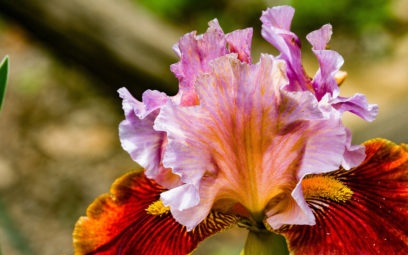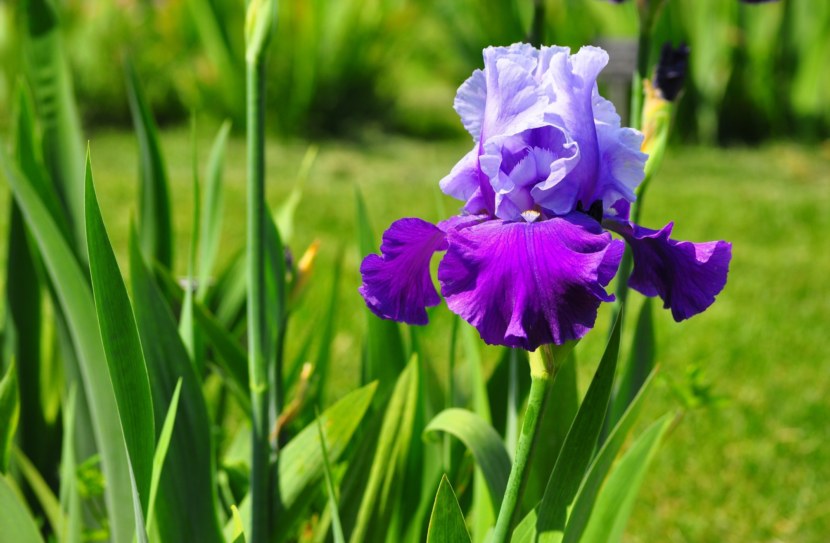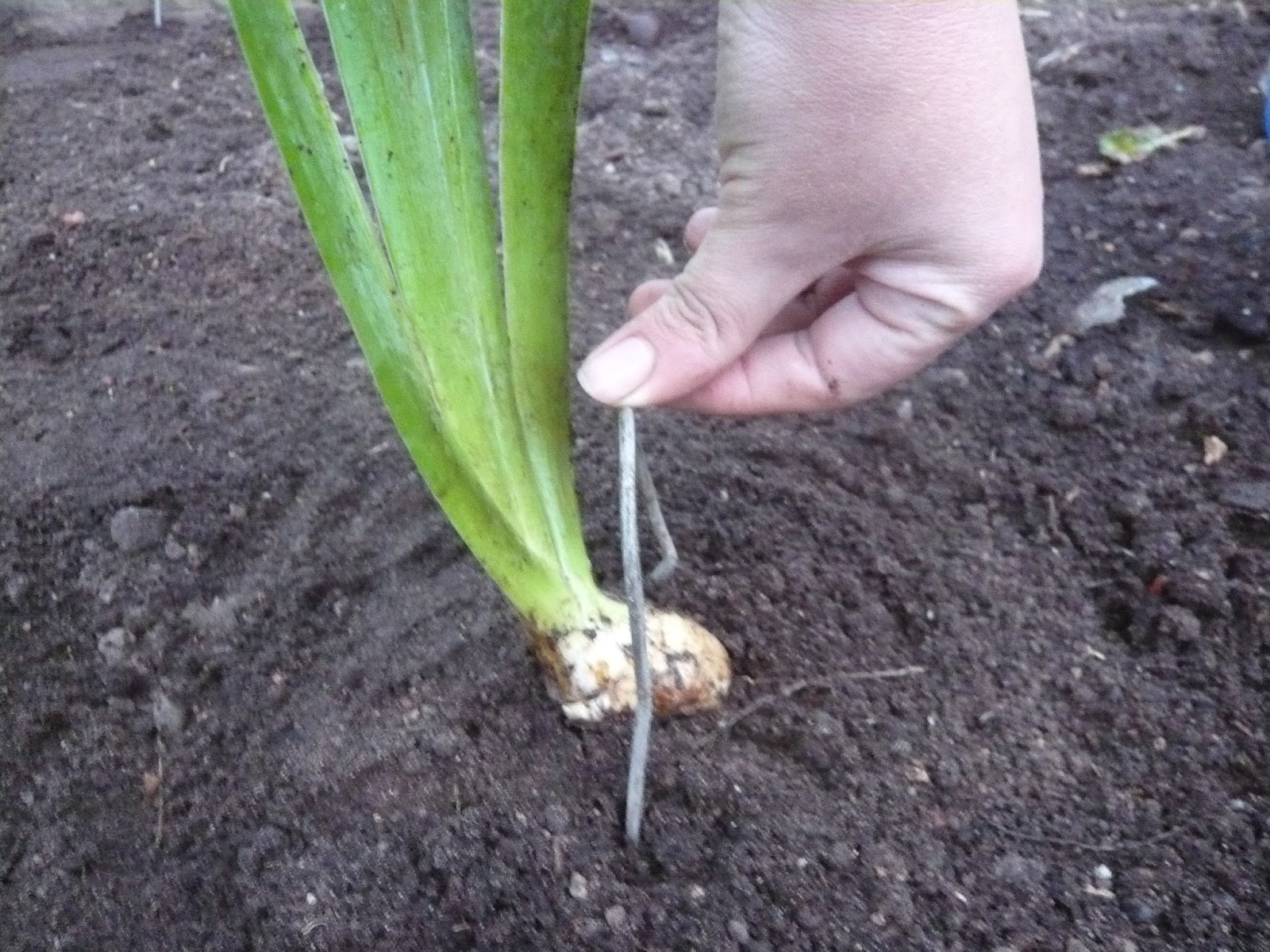Irises with an unpretentious character and beautiful flowering can be found in many household plots. Velvet perennial plant varieties, which are a real decoration of any flower garden, are especially popular. Therefore, many novice gardeners are interested in the intricacies of planting and care of the flower in the open ground.
Content
What are the irises
Today there are more than 750 varieties of iris, but among gardeners the most popular are:
- Dutch is a hybrid, flowers can be of different colors, begin to bloom at the beginning of summer, can calmly survive the cold, but in severe frost they need shelter, though it is better to dig out young bulbs for the winter;
- xiphoid - stands out by its non-standard form of bud, a more capricious plant of all types, therefore it is suitable for experienced gardeners;
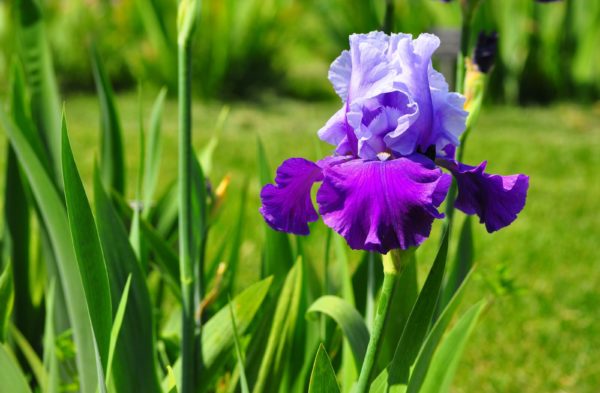
- Swamp - the most “tenacious” species, can grow calmly even in marshy soil and near water bodies;
- Siberian - luxurious flowers are collected at the very top of the peduncle, blooms profusely for many years, has good resistance to cold.
Soil and landing site
Neutral or slightly acidic soil is the best choice for irises, but alkali or acidic environment is not for them. In an acidic environment, irises will not only not dissolve their buds, but will also be susceptible to attacks by various bacteria. If it so happened that the plant was planted in just such a soil, then you have to neutralize the soil by adding chalk, ash or lime to it.
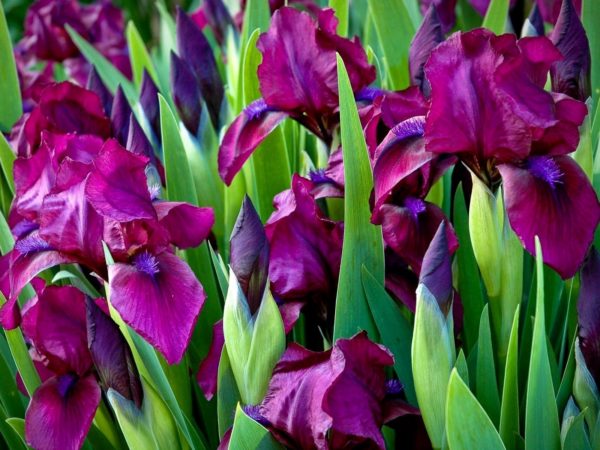
Cockerels do not like heavy soil, such soil must be mixed with compost, peat or sand. Excess peat is also not good, in this situation, you can’t do without adding organic substances.
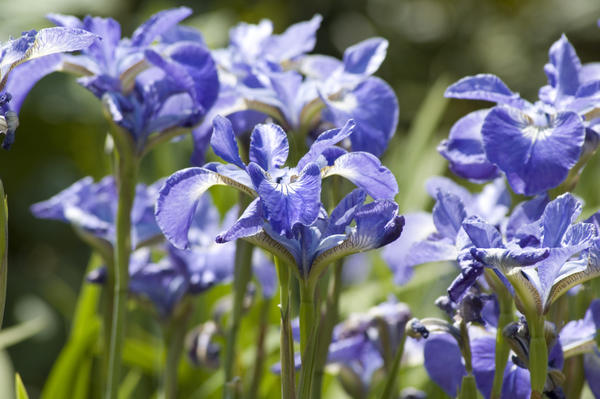 You may be interested in:
You may be interested in:Another important point is the choice of a place to land. Males love sunlight, so the site should not be in a dark place, since the base of the sun will bloom weakly and not very long.
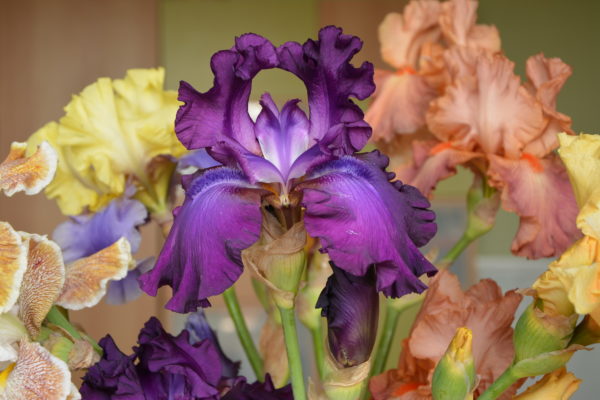
When choosing a place, it is worth considering the groundwater, namely, how close they are to the ground surface. If it is very close, you need to either raise the area at least 15-20 cm or prepare a drainage layer.
When to plant cockerels
When to plant irises is the main question for gardeners who are interested in such a beautiful flower, as in the photo. Planting and care in the open ground provides for both spring with summer and autumn. But here it is worth considering that iris can be bulbous or rhizome.
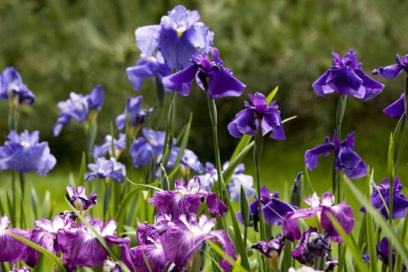 And if we talk about planting and leaving in the open ground in the spring, then we are talking about onion varieties. You can plant irises in any spring month, the main thing is that the soil warms up to + 10 ° С.
And if we talk about planting and leaving in the open ground in the spring, then we are talking about onion varieties. You can plant irises in any spring month, the main thing is that the soil warms up to + 10 ° С.
The males should bloom in early summer, but as practice shows, they begin to bloom only next year, and if it so happens that in June the buds open, then, as a rule, the bloom is very weak.
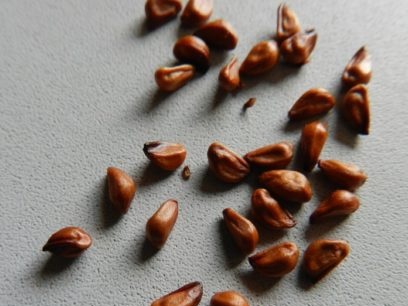
If we talk about planting and leaving in the open ground in the fall, then irises need to be planted before the temperature at night begins to drop below 0 ° C, at least a week, or better a month. This will allow the plant to strengthen, so as not to die from the cold.
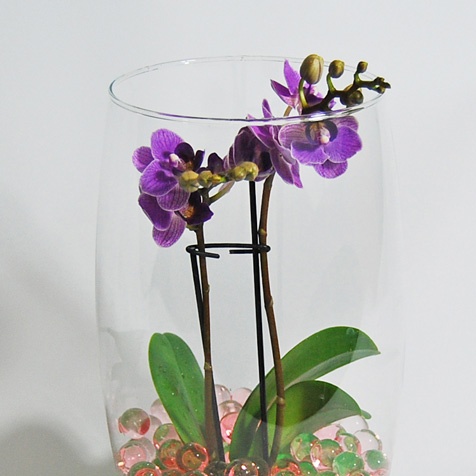 You may be interested in:
You may be interested in:But basically, the middle of the summer season is best suited for planting males, and experienced gardeners insist on this. Indeed, this way the plant will have time to lay a bud, help them not freeze in the cold and will contribute to flowering next spring.
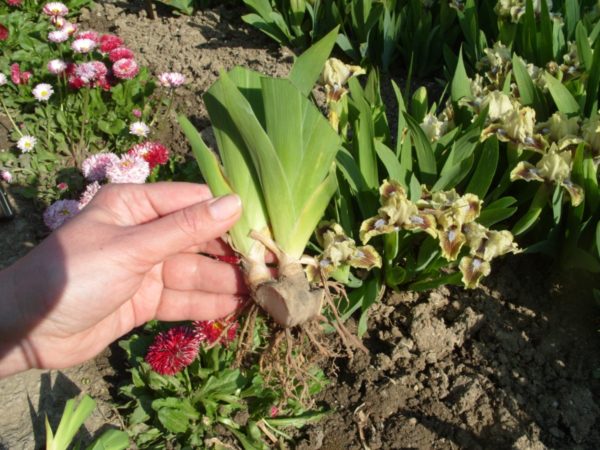
Irises can be planted in the middle zone in August, in October in warm regions, which is unacceptable for Siberia and the Urals.
For planting in the northern regions in the open ground, Siberian irises are more suitable. They are more hardy and their care will be to ensure that he has enough light and a two-day feeding.
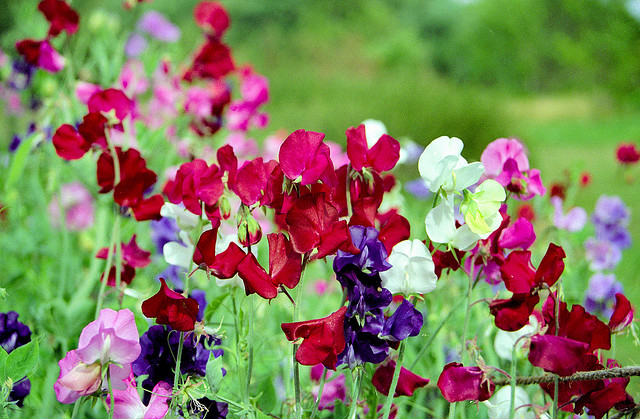 You may be interested in:
You may be interested in:But the Dutch irises will not survive the cold, so they should be considered for landing in the open ground only in areas with a warmer climate. Leaving is a lot of light, a little moisture and storage of bulbs in the winter.
Bulb preparation and planting
Bulbous irises, their planting and care will not cause many problems if the bulbs are prepared. Before being sent to the open ground, they must be kept in any fungicide like “Fundazol” or in a pink solution of manganese. This will prevent the planting material from simply rotting.
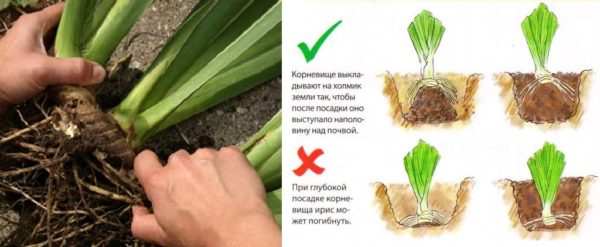
The instructions for planting cockerels are quite simple:
- We prepare holes and soil. Add sand, it will be drainage, but if the soil is loose, then sand is not needed.
- The depth should be equal to the height of the bulb, only multiplied three times, from about 5 to 8 cm.
- The distance between the bulbs is from 6 to 10 cm, but if you want to grow a beautiful bouquet, this distance can be reduced.
- The bulbs are slightly pressed into the ground so that they do not jump to the surface and fall asleep in the soil.
- Water and mulch with compost or peat.
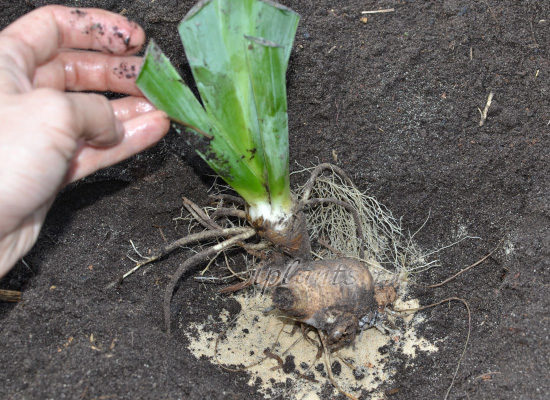
Landing in open ground can be not only bulbous, but also rhizome iris:
- We dig holes in the prepared bed, make a small knoll in the center and put the main root on it, and distribute the lateral roots to the sides of the hole.
- we close the main root with a sand layer no more than 2 cm thick, and cover the lateral roots with soil.
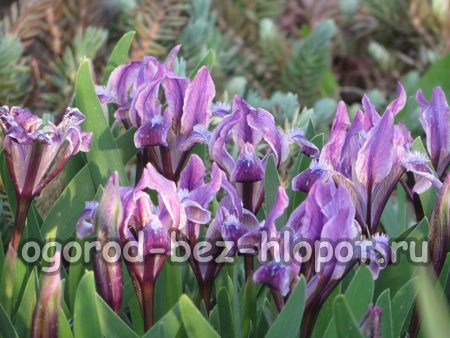 You may be interested in:
You may be interested in:Watering
It is especially important to monitor the watering of the plant during their rapid growth, that is, when the buds begin to form and bloom. As soon as the iris fades, watering can be stopped, as the plant requires peace.
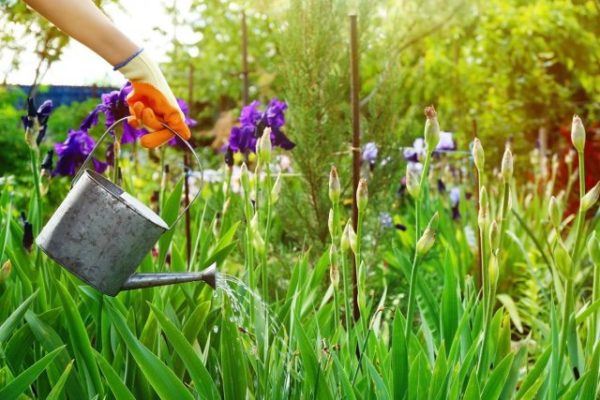
Top dressing
In order for the cockerels to please their bright and magnificent flowering, they should be fed:
- in the spring - nitrogen-containing fertilizers;
- the formation of buds - top dressing with phosphorus and potassium, it is possible with nitrogen;
- flowering - phosphorus with potassium.
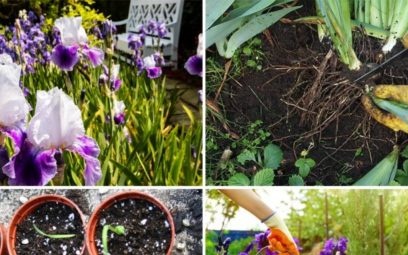
Bulb digging
Experienced gardeners are strongly advised to dig up bulbs of irises, especially when it comes to Dutch varieties, otherwise they can rot due to frequent rains. If the bulbs of other early flowers dig after their leaves become completely dry, then with cockerels you can not wait so much time.
As soon as the leaves give yellowness, as a rule, this happens 12-14 days after they fade, the bulbs can be taken out of the ground.
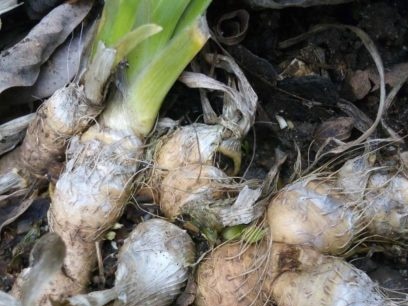
The dug bulbs should be treated with a weak solution of manganese, then dried for 2-3 weeks and put into storage in a ventilated area.
Wintering irises
Irises such as Siberian, marsh, bearded and Japanese are resistant to cold, so their bulbs can be left in the ground, but it is important to prepare them for winter.
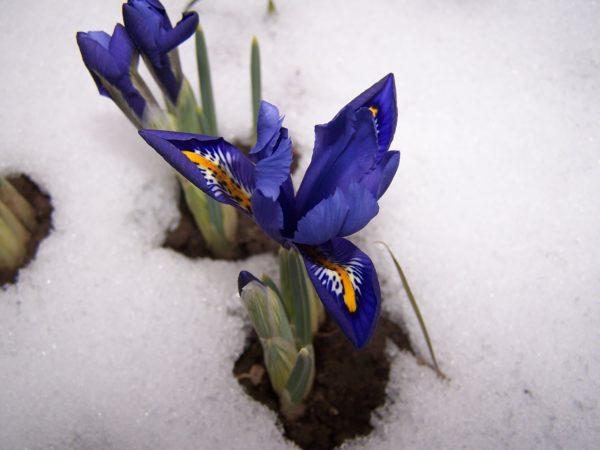
In autumn, the bulbs should be covered with roofing material or a simple plastic box to protect them from rain. In winter, dried leaves or spruce branches are suitable for warmth. But shelter for the winter is young specimens, adults are not necessary, as they easily tolerate frosts.
Disease
To diseases for which the males are weak - these are infections of the fungus and virus:
- mosaic - the defeat of the virus, which is transmitted by aphids. The disease can be seen by spots and stripes on the leaves. There is no suitable treatment method, so the infected seedling must be removed immediately, and the plant should be treated with drugs such as Actellic or Confidorm;
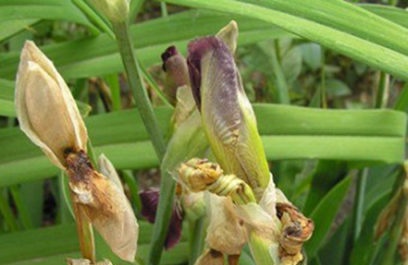
- bacterial rot - detected on the leaves in the form of brown spots. With such a disease, the affected area must be removed and the flower disinfected with potassium permanganate. If the disease could not be defeated, then the plant will have to be completely destroyed, and the soil should be etched with solutions against bacteria;
- gray rot - the disease can affect both the root and the leaves, in the latter case, the flower is treated with fungicide, but if the root is affected, the plant will have to be dug up.
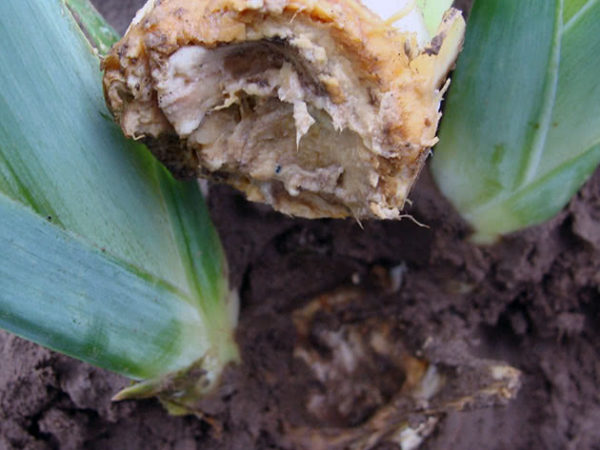
Common causes of illness include excessive watering, freezing of the roots, lack of potassium, or
phosphorus.
Pests
The most common pests that can harm or completely destroy the plant include:
- scoops - a dangerous pest that eats the base of the peduncle and causes the development of bacteriosis, therefore we use kalbofos for prevention;
- iris fly - for her food, this is not a bud that has not yet blossomed, which leads to its death, for prevention: “Actellik” or “Aktara”;
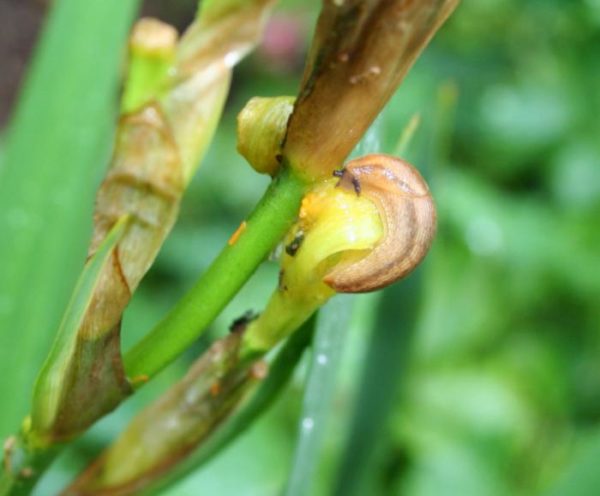
- thrips - malicious pests that affect first the leaves, then the buds and the whole plant, treatment: kalbofos with laundry soap, “Actellik”, “Aktara”;
- bear - affects the roots, you can fight it by adding crushed eggshell to the soil. You can also fill the passages with a solution of soap or detergent powder.
Sometimes leaves can rust slugs, then everything is not so scary, the main thing is that there are no weeds around the males.
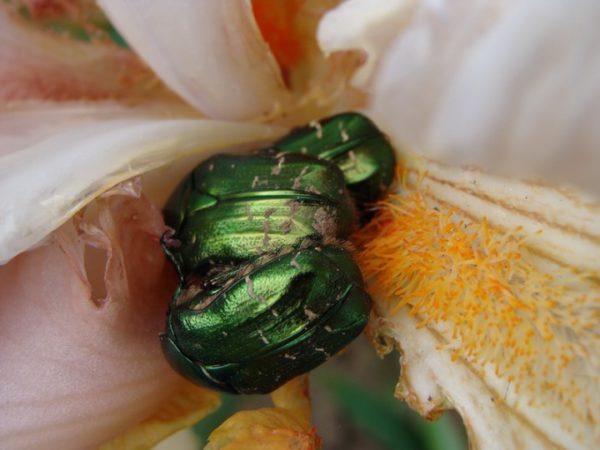
Iris flowers are amazing flowers that amaze with their size, shape and variety of colors. Not everyone knows, but such flowers are used not only to transform personal plots, but also receive essences from them for making perfumes. And for irises to admire their beauty, it is worthwhile to seriously approach the issue of planting them and find out all the intricacies of leaving in the open ground.

